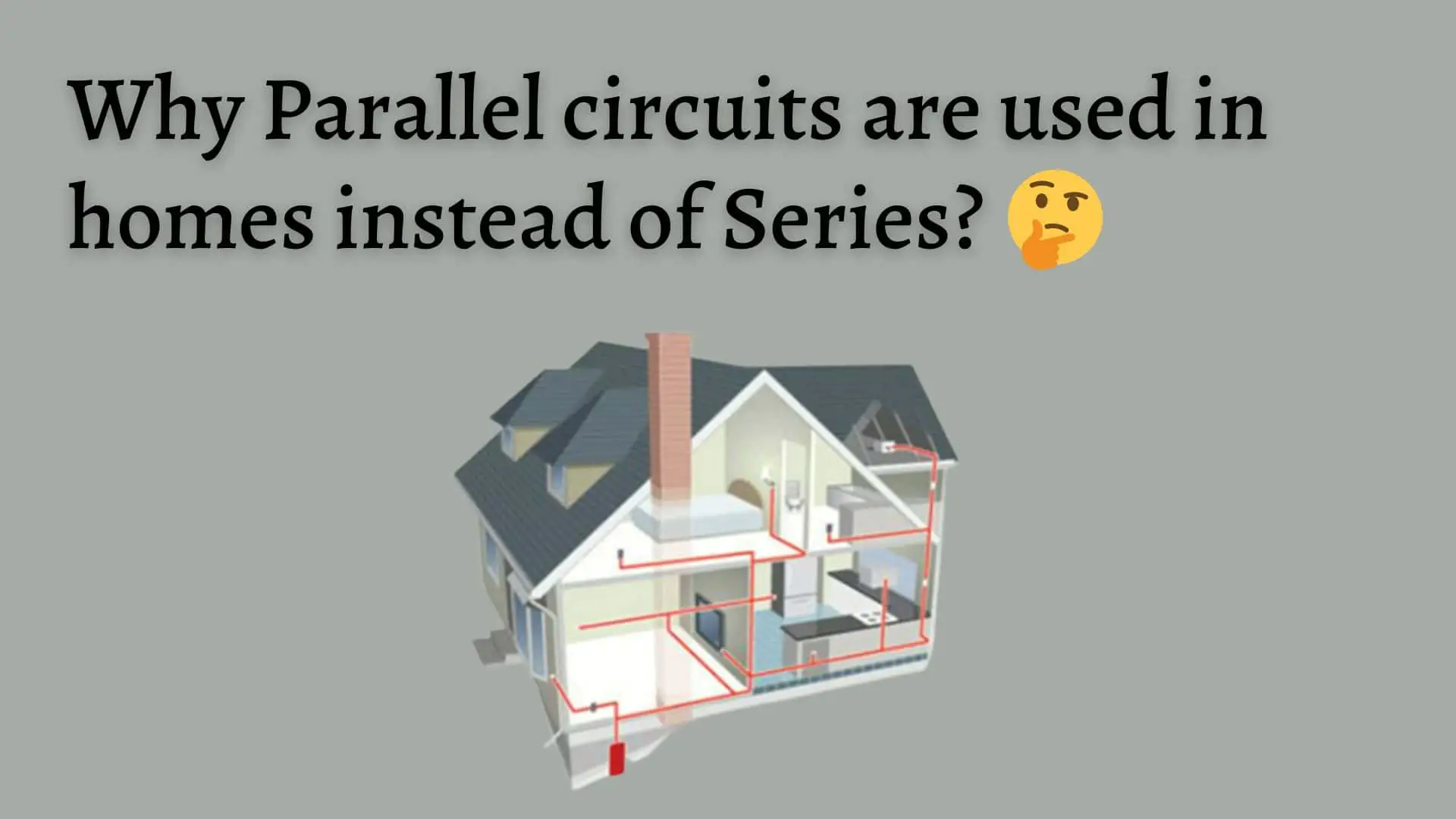How to Fix Discord Error: 'Installation Has Failed'

Entire homes are utilized by parallel circuits eradicating series circuits.This article will explain everything. Why are parallel circuits used in homes rather than series circuits? This article will also look at the potential benefits of parallel circuits as well as the disadvantages of series circuits.
To begin with, there are several arguments why I conclude that parallel circuits must be used in homes.
Firstly, parallel circuits are one of the circuits dividing the flowing current into two or many paths before returning back together to form a complete circuit. Connection paths in parallel circuits are independent of each other and help to operate the loads separately so that each electric equipment is autonomously connected to the main circuit maintaining an uninterrupted pathway.
Secondly, devices connected to main circuit loop act independently. If any devices fail, then each device never closes down the entire circuit. It assists in sustaining the continual voltage in the entire path of the circuit. This aids to safeguard our electric equipment from voltage drop/rise.
Similarly, parallel circuits supply enough power (voltage) to electrical equipment without dropping voltage, whereas series circuits drop voltage as the number of loads increases. Series circuits become more complex in failure as the whole circuit breaks out.
Also, adding new connections is complicated in series circuits ,while adding and removing them is easy in parallel circuits. There is even a need to remove the parallel circuit connection as it is independent and has no impact on the circuit.
A series circuit is the most basic type of circuit in which the components are interdependent. If any of the components fails or stops working, the entire circuit fails.
Voltages across a series circuit are the sum of each load voltage consumed by resistance, i.e. Vtotal= V1 + V2 +V3 +V4 +….Vn .(where n is the number of loads in circuit) . Let’s look at the figure below. Let resistance R1, R2 & R3 be power bulb.
In this figure, If Vtotal is the total voltage applied, then let V1, V2 & V3 be the voltage across R1, R2 & R3 resistance respectively.
Then, as per Ohm’s Law, V=RI
In series connection,
Vtotal = V1 + V2 +V3
RtotalI= R1I + R2I +R3I where I is current which is constant throughout the circuit.
Rtotal= R1 + R2 +R3 ………………………… i)
What this indicates is that the load determines how the voltage is spread across the circuit. In the case of a series connection, low volt power bulb lights brighter whereas the high volt is dimmer. Adding more resistance will even lower the power. At home if we add more bulb, then the voltage drops and no devices work properly. To make it work, connected bulbs should be decreased which is quite ineffective in home wiring. The series circuit has more resistance produced. Series circuits are used in voltage divider circuits and for current regulatory purposes. Series resistive circuits are used in low power circuits.
In a parallel circuit, there are at least two branches for the current to flow through. If one component stops working, it won’t affect the others from working.
In parallel connection,
Currents across a parallel circuit are the sum of each load current flowing i.e. Itotal= I1 + I2 +I3 +I4 +….In .(where n is number of loads in circuit) . Let’s look at the figure below. Let resistance R1, R2 & R3 be power bulbs.
If Itotal is the total current at circuit, then in a parallel circuit
I1, I2, I3 be voltages across Resistor R1, R2 & R3 respectively.
Then, Itotal=I1+I2+I3
V/R1= V/R1 + V/R2 + V/R3 (since voltage across parallel series is constant)
1/Rtotal= 1/R1 + 1/R2 +1/R3 …………………..ii)
Because the resistance of each bulb is inversely proportionate to that of the others, the light emitted by all of the bulbs is equally brilliant. Because the voltage is maintained at a consistent level throughout the circuit, increasing the number of bulbs that are connected in series will not result in a reduction in the amount of power that each individual bulb emits when it is lighted. Our electrical components are able to function faultlessly and without a drop in voltage as a direct result of this. The amount of resistance that is created is far lower in parallel circuits.
Conclusion
In a parallel circuit, all components share the same voltage. Components can be connected or disconnected from the circuit without impacting the other components. All the other parts of the circuit also have current but aren’t at full capacity, so resistance lowers, which in turn equals total resistance.
One negative aspect of a parallel circuit (no pun intended) is current overpowering your device. So, you should unplug it after using.
However, in a series circuit, all components share the same current. All the other parts of the circuit also have voltage but aren’t at full capacity, so resistance is higher which is equal to total resistance. One negative aspect of a series circuit is our home appliances won’t operate properly in series connection.


